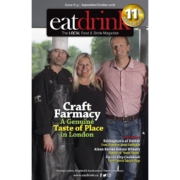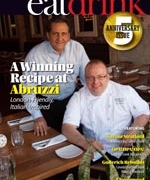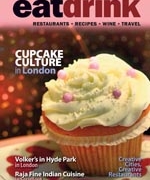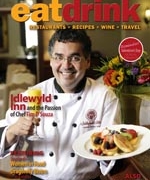The Great Immigrant Road Trip
Fusion is not new in the restaurant world. Even though Chef Edward Lee fears it has become a culinary gimmick, he knows the concept had profound meaning when it originated in a restaurant in Florida under the gaze of one of his heroes, Norman Van Aken. Real fusion is attuned to the everyday cooking of families who set roots in a new country and harmonize immigrant traditions with local cuisine. These are the types of recipes, restaurants, chefs, and families that Lee searched for from the nationalities sprawled across American cities when writing his book Buttermilk Graffiti: A Chef’s Journey to Discover America’s New Melting-Pot Cuisine. He found himself in cities where “there is nothing about this place that screams ‘culinary paradise’ ” and stumbled upon diners and cafes that “will never make it to the top of a Zagat list” (57); yet these were the places he found made-from-the-heart, cultural cuisine that surprised him into falling in love with unique dishes. Whenever Lee has clam pizza in Connecticut he contemplates “the slow and gradual interconnection of two cultures, in this case, Italian and New England.” He further writes, “When you look at the evolution of American cuisine, you always find this tension between tradition and innovation, a tension that produces the foods we crave most. It is in the intersection of the home we leave and the home we adopt that we find a dish that defines who we really are.”Lee himself was raised in Brooklyn with his Korean family before he moved to Kentucky to refine his own cooking style. As he described it: “I live inside the hem of the American South, along the edge of many cultures and influences. Midwestern values press down from above, the Appalachian influence pushes from the east, and antebellum South rises from below.” He identifies as a Southern chef, influenced not only by all other American styles, but immigrant ones, as well. Through his writing, he implores us to be “fascinated by other unlikely couplings that make up the narrative of life in America” because he knows that people project the food of their culture onto the fabric of their whole identity.
Immigrants he met along the way revealed how they missed the ways of eating in their homeland. Amal, a Moroccan immigrant in Connecticut, reminisces about her home in Marrakesh by telling Lee: “Every day, you gather with families and friends for meals. You stroll through the markets and smell spices. Everywhere you look, you see colors that remind you of nature. You drink mint tea in cafes and talk all day till the sun goes down. Meals are celebrations, enjoyed in large groups. In America, everyone eats alone.” Keeping food traditions alive in her transplanted home helps as she teaches Lee to prepare smen, a traditional Moroccan butter. He had been searching for someone to show him how to make it all his life. Lee himself pontificates about being a resident of America: “Maybe part of being American is releasing the anchor that we have to our heritage so we can drift directionless into the unknown waters of identity.”
All parts of his cross-country journey are entertaining and enlightening with French beignets in New Orleans, Cambodian cuisine in Massachusetts, Cuban food in Florida (where he learned to taste food in new ways by learning the nuances of smoking cigars), German schnitzel in Wisconsin, Lebanese kibbeh in Mississippi, and Swedish pancakes in Seattle. The oddest segment was Lee deciding to fast during Ramadan in a Muslim community in Michigan. It was paradoxical, not only because he is a chef who builds his life around food and has never fasted before, but he was on a food writing odyssey. All he could think was: “Conventional wisdom says that food writing should steer clear of politics and religion, but how do I do this in a place that is defined by its religion and cultural isolation?” So he fasted as the Muslims did and it provided new insight to food. Daytime fasting heightened the taste of food when the fasts were broken at sundown each night. He writes, “After a day’s fast, the flavors and fats cling to your bones like medicine and heal you from the inside out.”
Throughout the book, Lee engages in another type of food experimentation that is similar, yet different, and very personal. What he suggests is that the concept of cultural/gastronomic fusion should be unique and personal – take a recipe that you like, that may already be a riffed-upon food imported from another culture, and fuse it with your own preferences, even by changing one small ingredient to make it your own personal recipe. “The best cooking,” he writes, “is not about perfection, but rather the flawed process of how we aim for a desired flavor.” This is how the recipes at the end of each chapter were born, as Lee riffs on unique global delicacies with his Southern flair, like Coffee-Glazed Bacon with Pickled Watermelon and Fried Peanuts. He writes: “I never understood why the Asian identity and the American identity had to be compartmentalized, the way my Salisbury steak and apple pie were separated in my Swanson’s dinner. I wanted them all in one bite.” All the bites he took across America while writing Buttermilk Graffiti prove that each bite of food can lead to cultural outpourings about families, recipes, traditions, and memories.









